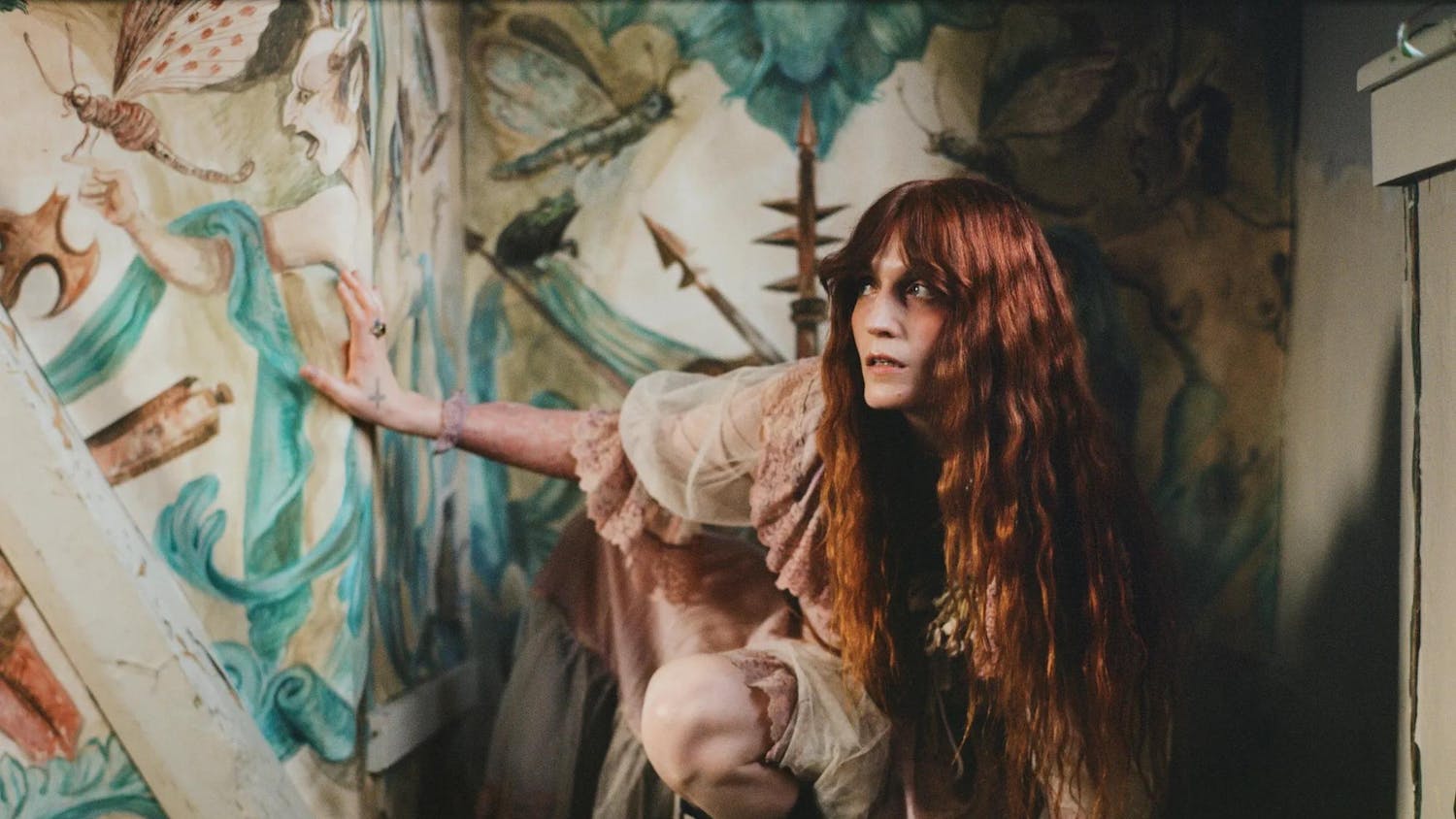In a contemporary gallery known for its clean cut lines and vast blank walls, one may be surprised to find an intricate set of traditional silver and an ethereal portrait of a woman in a pink ballgown. But together, this arrangement of historical artwork in a modern venue tells the story of a nation.
“Making It in America” — a collection of paintings, furniture and metalwork that shows the changing definition of American art over time — was unveiled as the newest exhibition at the Rhode Island School of Design Museum in the Chace Center Galleries Oct. 11.
“The exhibition’s title is a double entendre: Just as individual accounts of American life revolve around searches for freedom, fulfillment and identity, these stories are also embedded in the creation of works that comprise the history of American art,” according to the exhibit’s page on the RISD museum’s website.
The exhibition features works from RISD’s Pendleton House, which houses collector Charles Pendleton’s assortment of furniture and paintings. The space was constructed as a replica of his 19th century home, and the art in each room has been roped off and dimly lit.
“We wanted viewers to see the pieces shine on their own,” said co-curator Elizabeth Williams.
The more than 100 works of art featured in the exhibit are contextualized in the Chace Center Galleries, a space traditionally used to display contemporary art. Some of the more central pieces in the exhibit, dating from the late 1700s, inhabit the first room of the exhibition in a layout more typical of contemporary art.
Painter John Singleton Copley’s “Portrait of the Honorable Moses Gill, Esq.,” “Portrait of Sarah Prince Gill” and “Mrs. Moses Gill (Rebecca Boylston)” are displayed on brightly colored backgrounds, and the combination desk and bookcase by cabinetmaker John Goddard sit on a grey stage with its drawers and cabinets open under lights to provide easier viewing.
The larger second room continues the narrative of art as a manifestation of American success, with paintings by artists such as William Merritt Chase and Frank Weston Benson, carved and painted cabinets from throughout the 1800s and several silver sets by the famous Gorham Manufacturing Company. Other key pieces include an elaborate Neptune-themed silver centerpiece from the Gorham Collection, a writing desk designed by Frank Lloyd Wright and several porcelain dishes made by Theodore Russell Davis that were part of the White House dining set during Rutherford Hayes’ presidency.
The exhibition was organized by Maureen O’Brien, curator of painting and sculpture at RISD, and Williams, RISD’s curator of decorative arts and design, who had specific goals in planning the thematic layout of the project.
“I wanted to make sure it had not only beautiful objects, but brains,” O’Brien said. “I didn’t just want masterpieces, but a thesis. We had to put things together in a way that provoked people to look closer and learn more.”
Along with the exhibition, RISD has planned a series of events to explore American success through art over the course of history. “We attempt to bring in perspectives of all types of artists and people,” Williams said. “We hope for discussions of people looking at art in a historical sense, and people looking at it in an artistic sense for inspiration.”
The space was designed by Thomas Jayne, a New York-based decorator and Winterthur Museum’s graduate program alum who uses a mix of historical and contemporary styles in his work. Jayne’s use of historical elements in previous projects shown in his 2010 book, “The Finest Rooms in America,” compelled the RISD curating team to invite the famous interior designer to showcase the collection effectively.
Jayne chose several color-block schemes and used replicas of colored period wallpapers as his main design elements.
“Almost all of the objects displayed were meant to go into rooms that were colored and patterned,” Jayne said. “We used antique colors and patterns to set the antiques off in the basically white box to give them context.”
RISD professors have expressed interest in using the exhibit as a resource. “I will certainly walk through the exhibit and discuss various aspects of it with my students,” wrote John Dunnigan, head of the furniture design department, in an email to The Herald. “An exhibition like this has great potential to impact students’ ways of thinking about art and design as it can provide a historical context for their own work.”
The exhibition has garnered mixed reviews from students.
“I thought the first room was kind of boring, and the second room had art I had seen in the main entrance of the museum. Except for (George) Bellows’ Hudson River, which was one of the best I had seen in the museum’s collection,” said Max Sanon, a RISD student.
Kelsey Isaacs, also a RISD student, commented on the layout of the space.
“They really paid attention to the specific environments that were necessary for each piece. I don’t know that I thought that all of their choices were the best way to showcase that work, but that was what they were making an effort (to do). It felt like they were putting a contemporary spin on it and put it into context.”
O’Brien said she sees the high demand for the exhibition, which was heavily attended during RISD’s parents weekend, as a good indicator that the exhibition is interesting and informative.
“If you can learn the difference between a Copley and a Sargent and what went on in between, you’re on your way to a true understanding of American art,” O’Brien said.
The exhibit will remain open to the public through Feb. 9, 2014.

ADVERTISEMENT




